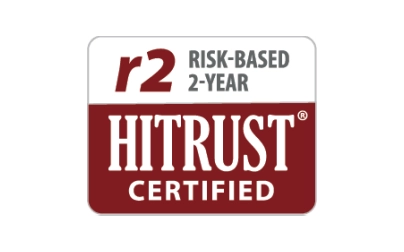If there’s one population that could really reap the benefits of telehealth, it’s seniors.
Not having to travel to a doctor’s office, avoiding unnecessary exposure to COVID-19 and other viruses, saving money with lower-cost virtual care, and being able to get 24/7/365 medical attention in the comfort of their home— these are just a few of the reasons that telehealth makes good sense for those over 65 (and the healthcare organizations that serve them). It’s one more way for health plans and providers to offer the Medicare population modern, effective and convenient care.
Plus, when Medicare Advantage plans get telehealth right for seniors, it can improve member experience and outcomes, leading to higher CMS Star ratings, and significantly boost member loyalty. Studies also show that the more people use telehealth and have good experiences, the more they’ll use it—which means a healthier Medicare population overall.
Wait, aren’t seniors already using telehealth?
According to a recent survey from healthinsurance.com, the overall number of seniors using telehealth services has increased 300% during the pandemic. But that doesn’t necessarily mean it’s been working well across the board. Another study found that 38% of seniors were not ready for video visits due to a lack of experience with technology. Even telephone visits can create a barrier for roughly 20% of the older population because they may have difficulty hearing, struggle with communicating or be experiencing symptoms of dementia.
So, what’s the path forward for Medicare members and telehealth?
Enter the power of healthcare engagement. A little outreach legwork can go a long way in helping your senior population leverage all that telehealth can offer. Eventually, they may even turn to virtual care as their first-thought, every-time option. Here are three tips to consider for success:
1. Educate seniors about telehealth before they need it.
Your first step is to use any and every opportunity to proactively educate your Medicare population on what telehealth is, how it can be used and what the benefits are in their lives. Use all of your member/patient touchpoints—open enrollment, new member kits, portals, apps, emails, text messages, one-on-one live outreach and interactive voice response (IVR) messaging.
It may be helpful to provide short, instructional videos with closed captioning; video patient testimonials; and information on how to prepare in advance for a virtual visit.
2. Engage your Medicare population and address their barriers to telehealth usage.
Again, proactive steps are key. Put a person-to-person, live outreach calling plan in place to contact members/patients (prioritize by highest-risk) to have a discussion about telehealth. During the conversation, you’ll want to evaluate the individual’s access to necessary technology and gauge the senior’s understanding of how to use it, as well as their willingness to try virtual care. It’s also a good chance to address any difficulties with hearing or vision that could impact the success of a video visit.
Your outreach plan can even include scheduling telehealth appointments in advance for preventive and maintenance care.
3. Make telehealth easy for seniors to access.
Healthcare consumers of all ages can be confused by how to get the virtual care they need. Do they call their health plan’s nurse advice line? Do they start with an online search of an on-demand physician service? Do they contact their primary care provider first?
That’s why it’s critical to provide simple instructions and one point of access. Offering a single point of contact—via a live person to speak to who can answer questions—has been shown again and again to be helpful, especially for Medicare plan members.
That initial conversation can be the stress-free starting point for whatever care is needed—nurse guidance, a physician e-consult or mental health support. This way, seniors get fast, convenient guidance and direction to the most appropriate level of care, too. And that reduces unnecessary primary, urgent and emergency care and related costs for all.
What about getting things right during the telehealth care visit?
At Carenet Health, our clinical team takes extra care to ensure seniors have a positive, successful and meaningful telehealth experience. We talked to our operations experts and experienced registered nurses on the telehealth frontlines about what needs to happen when a senior call comes in to our nurse triage call center. Following is what they said; use these tips to help your health plan or practice teams work with the Medicare population, too.
> Listen for cues. Our nurses are skilled at being fully present when taking a telehealth call from a senior. Depending on the individual’s situation, they may not be forthcoming about not being able to hear you or won’t speak up if there’s something they don’t understand. As one Carenet nurse shared: “There are situations where I can tell by their tone or the way they are responding that they may not have understood what I’m asking or didn’t hear me.”
> Ask questions in different ways. If a misunderstanding is suspected, one Carenet nurse said she approaches the situation with alternative language. “I will ask the question in a different way to see if I get the same response.” Another Carenet nurse chimed in, “If I feel like someone isn’t understanding my questions or advice, I try an alternative word or phrase—and try to provide a simpler definition.”
> Speak slowly and clearly, not necessarily loudly. Speaking louder isn’t always a good solution in working with someone who may have hearing issues. But being mindful of the tone of your voice and speed of your sentences can be an important element of ensuring a positive experience.
Carenet nurses are trained to adjust frequently, not to interrupt, and to slow down and speak as clearly as possible. A Carenet nurse offered this insight: “When it seems there’s an issue with communication, I’ll talk more slowly and enunciate important words.” Another nurse said, “I keep my sentences short and simple. And I’m always willing to repeat myself if needed. It feels good to show them that their call is important to me.” And another nurse approaches the situation this way: “I always test my voice by asking ‘is this loud enough? or too loud?’”
Senior calls may take longer, and Carenet operations works that knowledge into our service level and resource planning.
> Use another person as an amplifier. Sometimes older individuals who are struggling with hearing over the phone can have a better experience if there’s someone with them who can repeat the information. One of our RNs said, “It really helps when there’s somebody else there who can repeat the questions. If the patient doesn’t have someone nearby, I will offer to conference in a family member or friend to help.”
> Ask patients to repeat important points. Standard teaching methods often remain a good way to ensure understanding during virtual care encounters, too. “If I have any reason to think they may not understand me,” explained a Carenet RN, “I simply ask them to repeat the question or the care instructions—whatever the important information is—back to me, so I can be sure they are clear on next steps.”
> Embrace the storytelling. It’s not unusual for seniors to communicate through stories. Although it takes time, our nurses understand the value of listening not only to the story itself, but for the backstory that helps them read between the lines. Many times, there is a connection to the patient’s care need, and listening intently goes a long way in building the necessary telehealth-born relationship. As one Carenet RN said: “It’s really all about making them feel cared about and heard.”
> Set aside the stereotypes. It’s vital to remember in every engagement situation, including in a virtual care environment, that all seniors are not the same. The Medicare population is a varied one, with a wide range of ages, life experiences and abilities. All seniors are not lonely and scared. They’re not all struggling with technology. Many have used telehealth before. They don’t all have memory, cognitive or hearing issues. As one of our RNs said, “Seniors are probably the most diverse age group that I engage with. Each one has their own story and distinct needs.”
How can we help? Our teams have been working in the telehealth and Medicare engagement space for decades, and are continually updating our best practices. Contact Carenet Health today to discuss how we can help optimize your telehealth solutions for seniors and other specific populations.
———–
Want to read more? Learn more about how to best engage with your Medicare members to close gaps in care.


